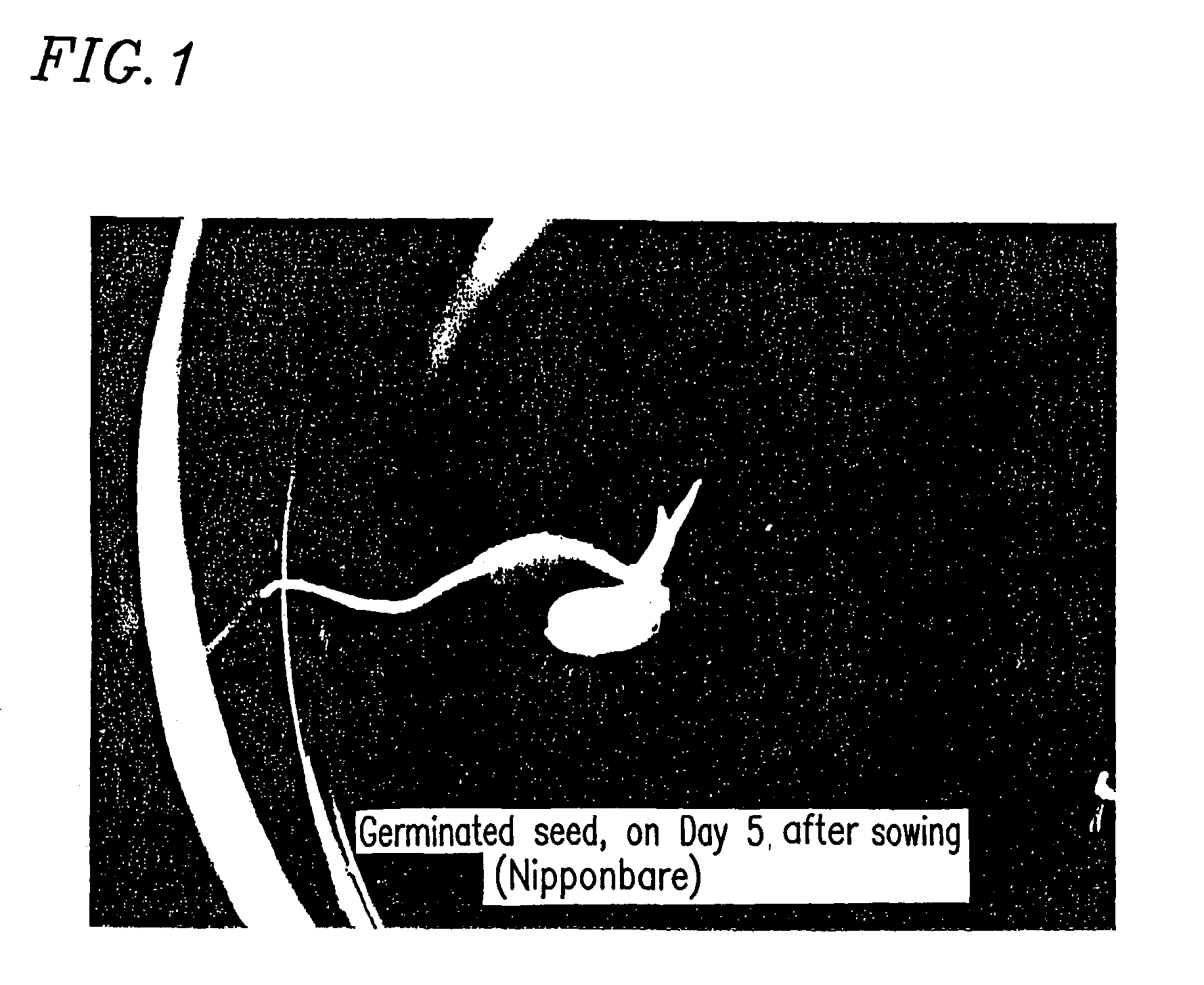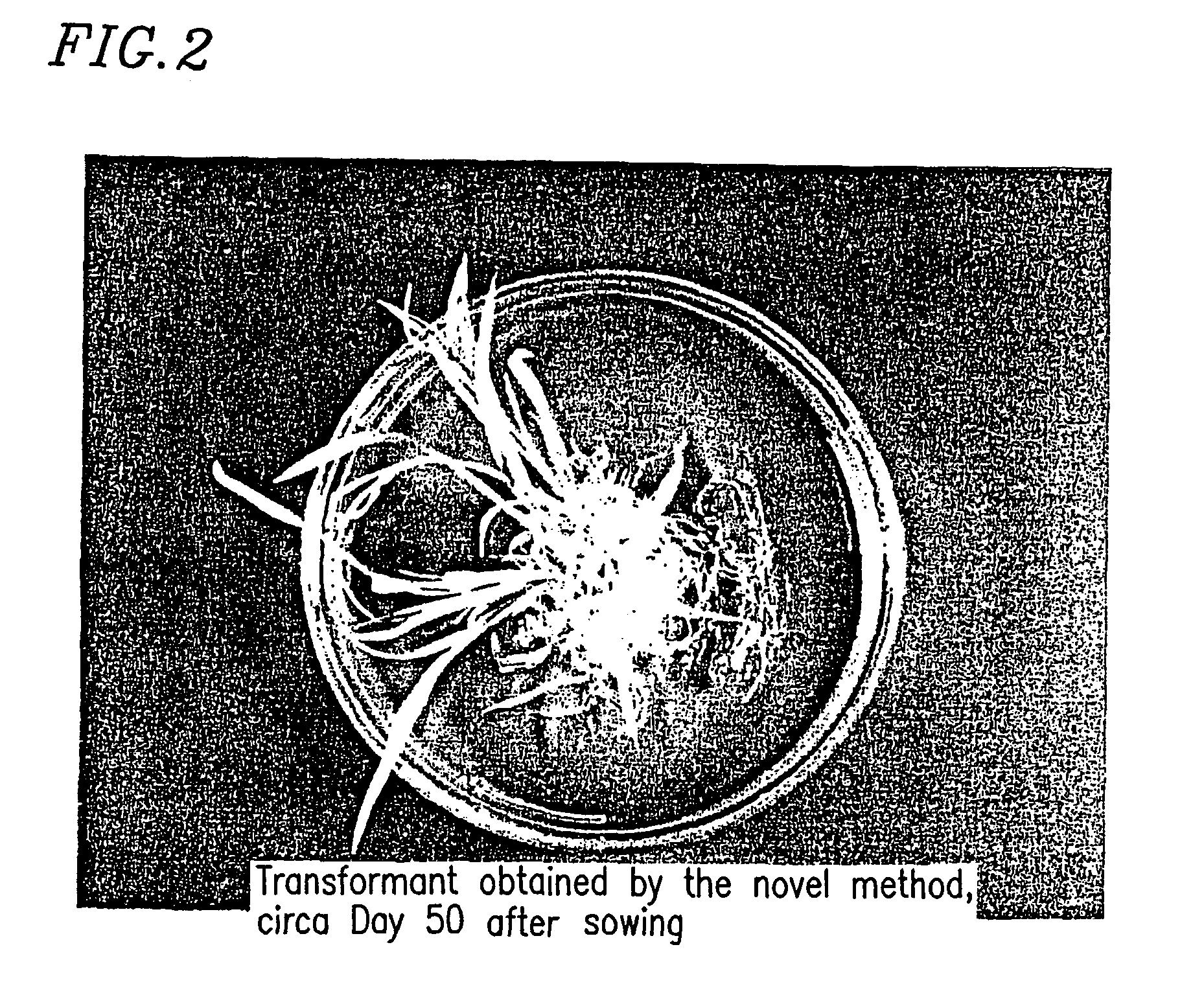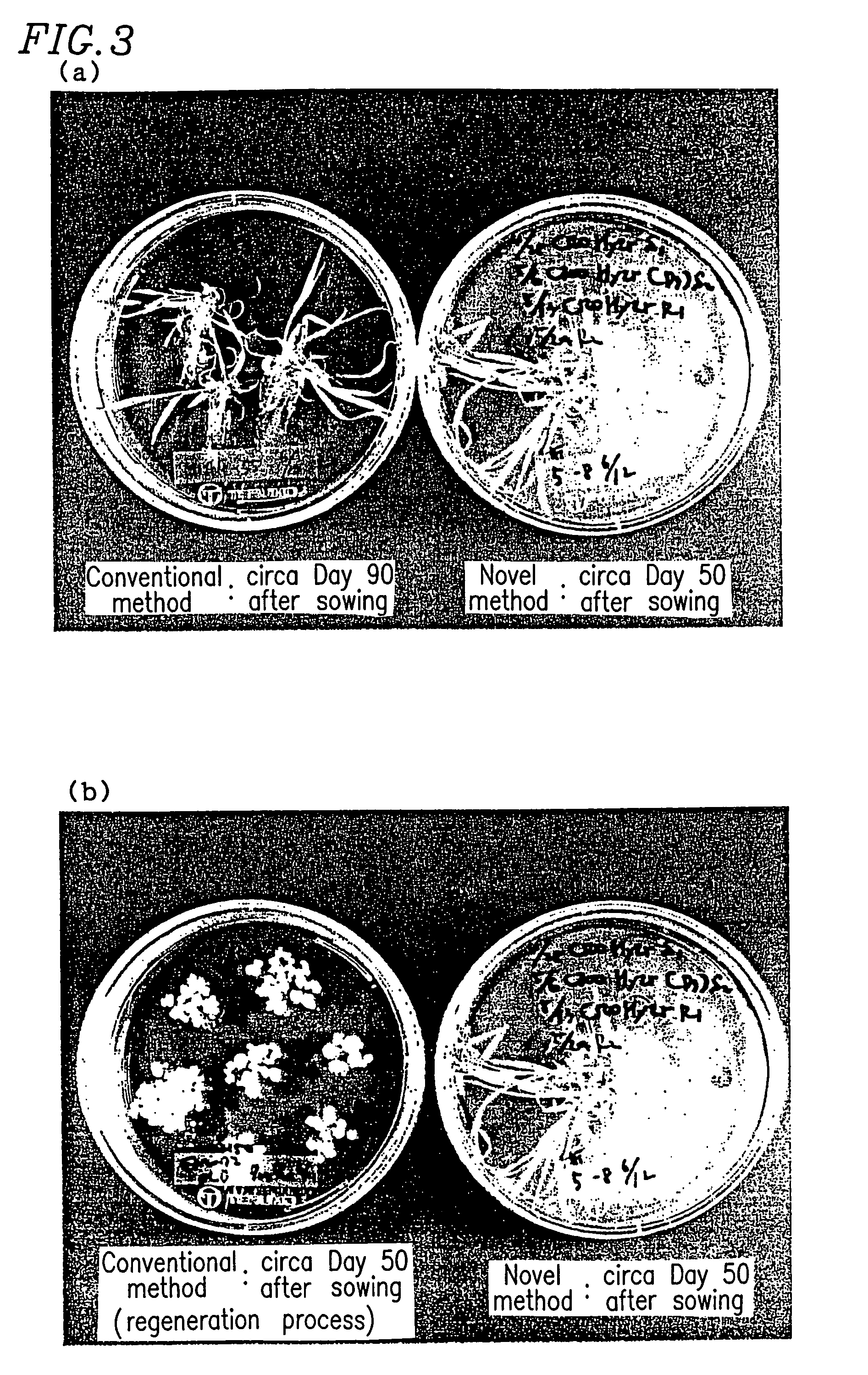Ultra-fast transformation technique for monocotyledons
a technology of agrobacterium and monocotyledon, applied in the field of ultra-fast transformation of monocotyledon, can solve the problems of cumbersome isolation of immature germs, difficult application of agrobacterium /i>transformation technique to monocotyledon, etc., and achieve the effect of improving the agrobacterium transformation technique for monocotyledons, achieving a plant far more efficiently and quickly
- Summary
- Abstract
- Description
- Claims
- Application Information
AI Technical Summary
Benefits of technology
Problems solved by technology
Method used
Image
Examples
example 1
Transformation of a Rice Plant Using the Method According to the Present Invention
[0041]After removing the husks of the seeds of Nipponbare, a typical rice cultivar, the seeds in an intact state were sterilized in a 2.5% sodium hypochlorite (NaClO) solution. After being washed well with water, the rice was subjected to the following aseptic manipulations.
1.1 Pre-Culture
[0042]The seeds were sown on an N6D medium containing 2,4-D (30 g / l of sucrose, 0.3 g / l of casamino acid, 2.8 g / l of proline, 2 mg / l of 2,4-D, 4 g / l of gellite, pH5.8), and incubated at 27° C. to 32° C. for 5 days. The seeds germinated during this period (FIG. 1).
[0043]As a plant expression vector for transforming an Agrobacterium, a plasmid pIG121Hm, in which the GUS gene including a first intron of the Ricinus catalase gene and a hygromycin resistance gene are linked, was used (Nakamura et al., PLANT BIOTECHNOLOGY II, a special issue of Gendai Kagaku, pp. 123-132 (1991)). Agrobacterium EHA...
example 2
Transformation of a Rice Plant Using a Conventional Method
[0052]For comparison with the method described in Example 1, a rice plant transformation according to a conventional method was performed as follows, using Nipponbare as the material to be transformed.
2.1 Callus Induction
[0053]After removing the husks of the seeds of Nipponbare, the seeds were sterilized and sown on a callus induction medium (an N6D medium containing 2 m g / l of 2,4-D), and incubated at 30° C. under light. About 4 weeks after the beginning of callus induction, the grown calluses derived from blastodisks were used for transformation.
2.2 Transformation
[0054]The resultant calluses were infected with Agrobacterium EHA101 which was transformed with a plant expression vector pIG121Hm as described in Example 1, and incubated on an 2N6-AS medium in the dark at 28° C. for 3 days to effect co-culturing.
2.3 Bacterium Elimination and Selection
[0055]By using an N6D medium containing 500 m g / l of carbenicillin, the Agrobact...
PUM
| Property | Measurement | Unit |
|---|---|---|
| temperature | aaaaa | aaaaa |
| temperature | aaaaa | aaaaa |
| temperature | aaaaa | aaaaa |
Abstract
Description
Claims
Application Information
 Login to View More
Login to View More - R&D
- Intellectual Property
- Life Sciences
- Materials
- Tech Scout
- Unparalleled Data Quality
- Higher Quality Content
- 60% Fewer Hallucinations
Browse by: Latest US Patents, China's latest patents, Technical Efficacy Thesaurus, Application Domain, Technology Topic, Popular Technical Reports.
© 2025 PatSnap. All rights reserved.Legal|Privacy policy|Modern Slavery Act Transparency Statement|Sitemap|About US| Contact US: help@patsnap.com



